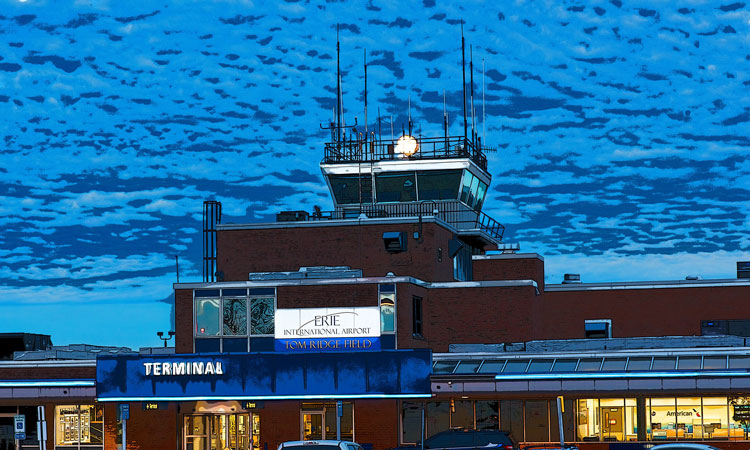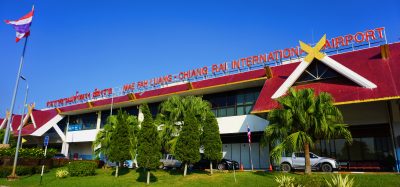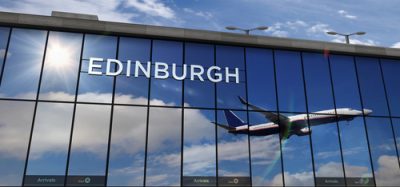Harnessing technology to drive recovery at Erie Regional Airport
- Like
- Digg
- Del
- Tumblr
- VKontakte
- Buffer
- Love This
- Odnoklassniki
- Meneame
- Blogger
- Amazon
- Yahoo Mail
- Gmail
- AOL
- Newsvine
- HackerNews
- Evernote
- MySpace
- Mail.ru
- Viadeo
- Line
- Comments
- Yummly
- SMS
- Viber
- Telegram
- Subscribe
- Skype
- Facebook Messenger
- Kakao
- LiveJournal
- Yammer
- Edgar
- Fintel
- Mix
- Instapaper
- Copy Link
Posted: 20 October 2021 | James Pacansky | No comments yet
International Airport Review Editor, Holly Miles, spoke with James Pacansky, CFO at Erie Regional Airport Authority, to find out how the airport is responding to the ongoing challenges of the coronavirus pandemic.


Could you provide some background on your role at Erie Regional Airport?
As the Chief Financial Officer of Erie Regional Airport Authority, I am responsible for the financial oversight of Erie International Airport. I oversee several operating units and capital projects. When I came on board a few years ago, I was tasked with implementing new, more sophisticated financial management software upon the recommendation of our auditor, who recommended upgrading. By taking steps to gain crucial visibility into our financial and operations management, we were able to monitor, and quickly react to, the industry disruption that the COVID-19 pandemic caused.
How has Erie Regional Airport dealt with COVID-19 disruptions over the past year and a half? Were there ways you were able to offset the plummet in passenger-based revenue in 2020?
We were able to offset passenger-based revenue dropping so significantly in 2020 by having visibility into all of our key metrics and trends. By diving into our expenses, everything from equipment to administration and airfield, we were able to figure out where costs could reasonably be trimmed. Identifying avoidable spending and more closely managing staff overtime hours helped us significantly, as well as closely monitoring important industry metrics, such as the cost per enplaned passenger (CPE). We were also able to take the pulse of our airport’s financial health in real-time with trend analysis and budget comparisons to determine where we needed to make adjustments quickly.
How did technology help Erie Regional Airport navigate the challenges brought on by COVID-19?
We used technology like BKD Technologies and Sage Intacct to make those real-time analyses and adjustments, but also to save time and money through streamlining our financial processes. For instance, we eliminated continuous data entry that required recording the same entries month after month. With the right technology, we set up recurring invoices once a year for all the airline, rental car, and other annual leases. Once those tasks were automated, we easily absorbed the responsibilities of a staff accountant who retired, saving $80,000 annually by not filling that vacancy.
Sage Intacct provided us the ability to view budget-to-actuals comparisons, drill down into specific months instantly, and see the broader context of each transaction. We also were able to meet the requirements and coordinate the complex multi-million-dollar infrastructure improvements funded by the Federal Aviation Administration (FAA) and state grants. When we received new economic aid from the CARES Act, we had what we needed to demonstrate a sustainable operating cost structure and exclusively track expenses for government-funded infrastructure projects.
What is your strategy going forward to deal with the continued uncertainty brought on by the Delta variant?
Going forward, we will continue to rely on our financial and operations technology, BKD Technologies and Sage Intacct, to guide us in real-time about how to best serve our closest stakeholders, including the airlines, rental car companies, passengers, and community. For example, we’re keeping a close eye on cost per enplaned passenger (CPE) to see if we can reduce the fixed fees we charge airlines, while remaining financially self-sustainable as things start to go back to normal. Our new software also provides us with the ability to track important metrics such as different sources of non-aeronautical revenue per enplaned passenger. Having this crucial information has given us the ability to renegotiate contracts with tenants whose rates were adjusted due to the COVID-19 pandemic. These metrics are also useful in the preparation of the 2022 general operating budget as I am using the latest revenue figures to try to determine future revenues in an environment that has been in constant change for a year and a half now.
What is your perspective on how the air travel industry is evolving?
If the last year and a half has taught us anything it’s that we are living in an ever-changing environment when it comes to the COVID-19 pandemic. There is more uncertainty now than there ever has been. As a result, it’s more important than ever for airport management to have the technology in-house that provides them with the latest information, so they can make the necessary adjustments to their operations to best cope with all the uncertainties facing our industry.
Airports, with our high fixed costs built into our infrastructure, must be prepared to use technology to continue to adapt to shifting travel trends quickly.
Airports, with our high fixed costs built into our infrastructure, must be prepared to use technology to continue to adapt to shifting travel trends quickly. These technological improvements aren’t just for our financial and operating systems behind the scenes, but also innovative customer-facing ones like using biometric technology to reduce contact points and increasing the availability of rapid COVID-19 testing.
McKinsey estimated that 2020 brought about close to half a trillion dollars of losses across the air travel industries. We have gained somewhat of a degree of normalcy again this summer as we saw a lot of pent-up demand for leisure travel. There were a lot of families who had vacations cancelled in 2020 that were able to go in 2021. However, that has been threatened again by the Delta variant.
We have also not seen the rebound with our business travellers like we’ve seen with our leisure travellers and that’s because business is being conducted differently. We have local companies that still have not brought employees back to their offices. If these companies are not comfortable right now bringing their employees back to a conventional office type setting, they surely are not comfortable sending them on aircraft to conduct face-to-face meetings when technology today has proven it’s reliable enough to be accomplished virtually.
Airport executives have encountered industry downturns before and have recovered. However, in my opinion, this downturn is unique and different in that the world has never had the technology it does today which allows for meetings and sales calls to be conducted virtually. That being said, my prediction is not suggesting that business travel in the future will be nil, but I do believe that the pie has shrunk. To what degree we don’t know, and likely will not know for some time.


















